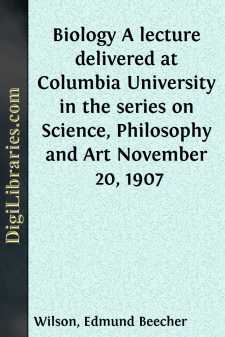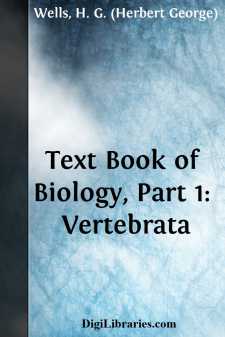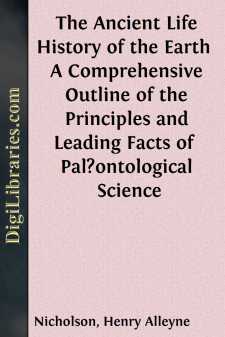Categories
- Antiques & Collectibles 13
- Architecture 36
- Art 48
- Bibles 22
- Biography & Autobiography 813
- Body, Mind & Spirit 138
- Business & Economics 28
- Children's Books 12
- Children's Fiction 9
- Computers 4
- Cooking 94
- Crafts & Hobbies 4
- Drama 346
- Education 46
- Family & Relationships 57
- Fiction 11821
- Games 19
- Gardening 17
- Health & Fitness 34
- History 1377
- House & Home 1
- Humor 147
- Juvenile Fiction 1873
- Juvenile Nonfiction 202
- Language Arts & Disciplines 88
- Law 16
- Literary Collections 686
- Literary Criticism 179
- Mathematics 13
- Medical 41
- Music 40
- Nature 179
- Non-Classifiable 1768
- Performing Arts 7
- Periodicals 1453
- Philosophy 64
- Photography 2
- Poetry 896
- Political Science 203
- Psychology 42
- Reference 154
- Religion 505
- Science 126
- Self-Help 81
- Social Science 81
- Sports & Recreation 34
- Study Aids 3
- Technology & Engineering 59
- Transportation 23
- Travel 463
- True Crime 29
Biology A lecture delivered at Columbia University in the series on Science, Philosophy and Art November 20, 1907
Description:
Excerpt
BIOLOGY
I must at the outset remark that among the many sciences that are occupied with the study of the living world there is no one that may properly lay exclusive claim to the name of Biology. The word does not, in fact, denote any particular science but is a generic term applied to a large group of biological sciences all of which alike are concerned with the phenomena of life. To present in a single address, even in rudimentary outline, the specific results of these sciences is obviously an impossible task, and one that I have no intention of attempting. I shall offer no more than a kind of preface or introduction to those who will speak after me on the biological sciences of physiology, botany and zoology; and I shall confine it to what seem to me the most essential and characteristic of the general problems towards which all lines of biological inquiry must sooner or later converge.
It is the general aim of the biological sciences to learn something of the order of nature in the living world. Perhaps it is not amiss to remark that the biologist may not hope to solve the ultimate problems of life any more than the chemist and physicist may hope to penetrate the final mysteries of existence in the non-living world. What he can do is to observe, compare and experiment with phenomena, to resolve more complex phenomena into simpler components, and to this extent, as he says, to "explain" them; but he knows in advance that his explanations will never be in the full sense of the word final or complete. Investigation can do no more than push forward the limits of knowledge.
The task of the biologist is a double one. His more immediate effort is to inquire into the nature of the existing organism, to ascertain in what measure the complex phenomena of life as they now appear are capable of resolution into simpler factors or components, and to determine as far as he can what is the relation of these factors to other natural phenomena. It is often practically convenient to consider the organism as presenting two different aspects—a structural or morphological one, and a functional or physiological—and biologists often call themselves accordingly morphologists or physiologists. Morphological investigation has in the past largely followed the method of observation and comparison, physiological investigation that of experiment; but it is one of the best signs of progress that in recent years the fact has come clearly into view that morphology and physiology are really inseparable, and in consequence the distinctions between them, in respect both to subject matter and to method, have largely disappeared in a greater community of aim. Morphology and physiology alike were profoundly transformed by the introduction into biological studies of the genetic or historical point of view by Darwin, who did more than any other to establish the fact, suspected by many earlier naturalists, that existing vital phenomena are the outcome of a definite process of evolution; and it was he who first fully brought home to us how defective and one-sided is our view of the organism so long as we do not consider it as a product of the past....












